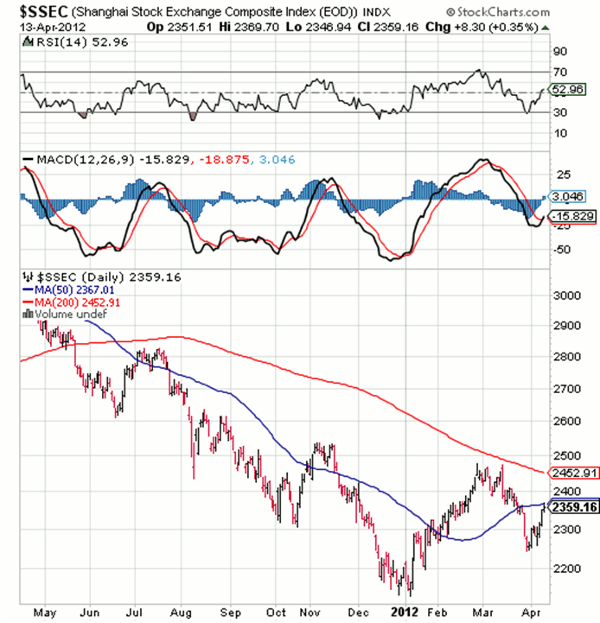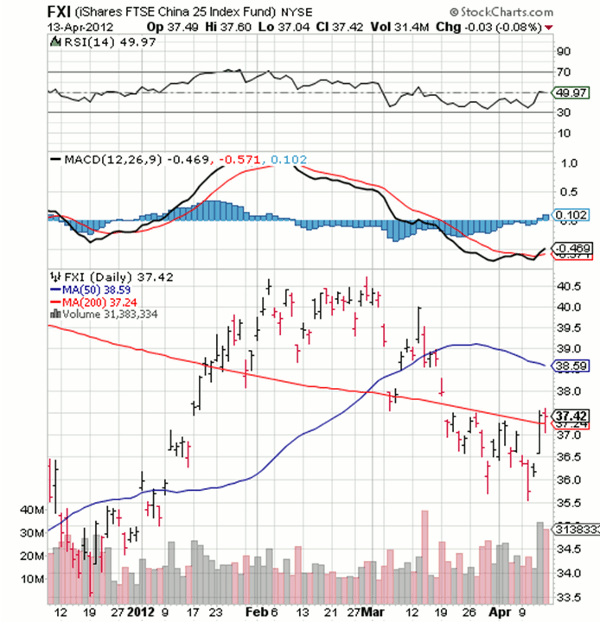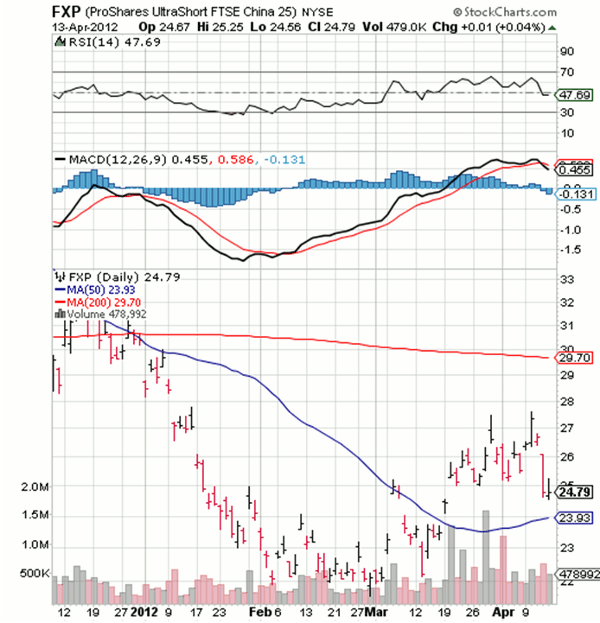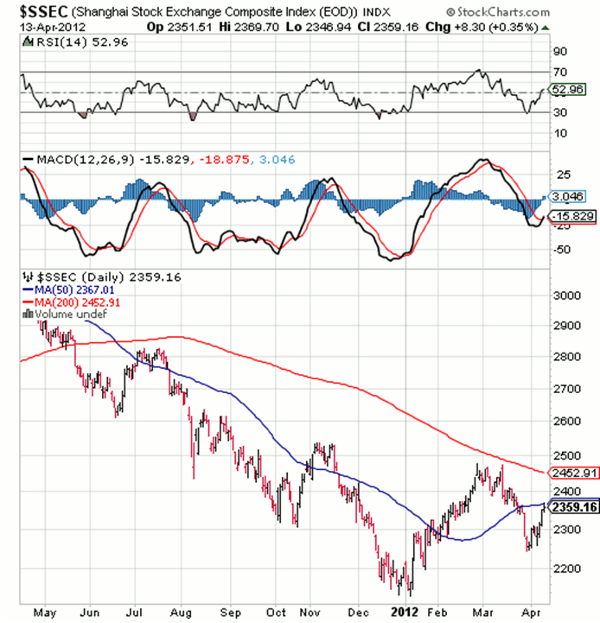China is now at a key juncture, says John Nyaradi, and moving averages may offer definitive signals traders and investors can use to go long or short the emerging giant using select ETFs or put options.
China made the news last week when first-quarter GDP growth slowed to 8.1%, missing analyst estimates and logging the slowest growth in three years. While most analysts expect a soft landing, the figures indicate the ongoing possibility of a hard landing, and US stock prices responded to the news with a sharp downturn late in the week to close out what was the worst week for the markets in 2012.
Then, over the weekend, China announced that it is expanding the band in which the yuan can trade against the US dollar from 0.5% to 1% in an attempt to battle the slowdown and perhaps make China’s exports more competitive on global markets by making them relatively cheaper than the country’s competitors.
The GDP growth number was significantly lower than the fourth-quarter 8.9% expansion, and overall, fixed investments were up 19% compared to 24% the year prior.
Exports also slowed to approximately 7% compared to the usual double-digit growth as Europe and the United States saw their economies slow and imports from China decline.
Finally, the China real estate market continues to cool, and many suspect that a bubble in that asset class is slowly deflating, as sales declined about 15% year over year.
The news has not been lost on the Shanghai Composite Index, which is down some 20% since last spring.
In the chart above, we can see how the index has been in steady decline for nearly a year. It bottomed at the beginning of 2012 and is now trying to make a comeback; however, Shanghai still faces significant resistance ahead as it tries to reclaim its 200-day moving average.
NEXT: Start with the Primary China ETF
|pagebreak|The iShares FTSE China 25 Index Fund (FXI) is a widely traded China ETF, and its chart shows a similar picture, with the index trying to reclaim the 200-day moving average but still well below the widely watched 50-day moving average.
China appears to be at a significant turning point. If its economy continues to cool towards a hard-landing scenario, there will be opportunities to short China using both ETFs and put options.
In this instance, one strategy would be to buy put options on FXI and another would be to buy the inverse China ETF, the ProShares UltraShort FTSE China 25 Index Fund (FXP).
As you can see on the above chart, FXP has recently formed a bottom and started to climb above its 50-day moving average.
NEXT: Other Emerging ETFs with Big China Exposure
|pagebreak|Long China positions would obviously be available in FXI, and another way to get exposure to China is through one of the BRIC or emerging market ETFs that include China in their holdings.
See related: Faceoff: Emerging ETFs vs. S&P 500
Major China ETFs include the iShares MSCI Hong Kong Index Fund (EWH) and iShares MSCI Emerging Markets Index Fund (EEM), which also has significant China exposure.
Another look at the Shanghai Composite shows the 50-day moving average (blue line) still below the 200-day moving average (red line), which is the widely watched “death cross,” indicating a bear market and a strong sell signal among technicians.
The 50-day MA is trying to turn up, and should it cross the 200, long positions would likely be in order, while failure here would suggest the potential for further declines ahead.
Bottom Line
China is at a significant turning point, and while many analysts suggest that the worst is over, I would suspect that there could be rockier patches ahead as Europe slows and the United States continues to be on weak footing.
China is extremely dependent upon its export activity, and a slowing developed world can only be bad news for the dragon. As always, the charts will tell the story, and investors can use the broad moving averages as a guide to position themselves on the right side of this important global market.
By John Nyaradi of Wall Street Sector Selector
















































